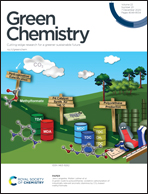Green is the new black – a review of technologies for carboxylic acid recovery from black liquor
Abstract
Carboxylic acids are one of the most important building blocks and feedstocks for fine chemicals, flavors and polymers, yet their production largely relies on petrochemical derivatives or processes that require large amounts of energy or chemicals. To ensure their long-term sustainable production, it is necessary to explore different options of renewable feedstocks. An alternative solution is the recovery of carboxylic acids present in black liquor. These compounds are formed as by-products during the cooking stage in the Kraft pulping process; they are later burnt along with the other compounds present in black liquor to be transformed into energy. However, usually an energy surplus is generated due to the large amounts entering the unit, therefore their recovery and later use as renewable feedstocks could be considered as an advancement in waste valorisation. Furthermore, the extraction of carboxylic acids from black liquor can increase pulp production, boosting the efficiency of the Kraft process. This review aims to examine the different technologies to recover carboxylic acids from black liquor as well as the challenges associated with their incorporation into paper and pulp mills in order for them to become integrated forest biorefineries.



 Please wait while we load your content...
Please wait while we load your content...